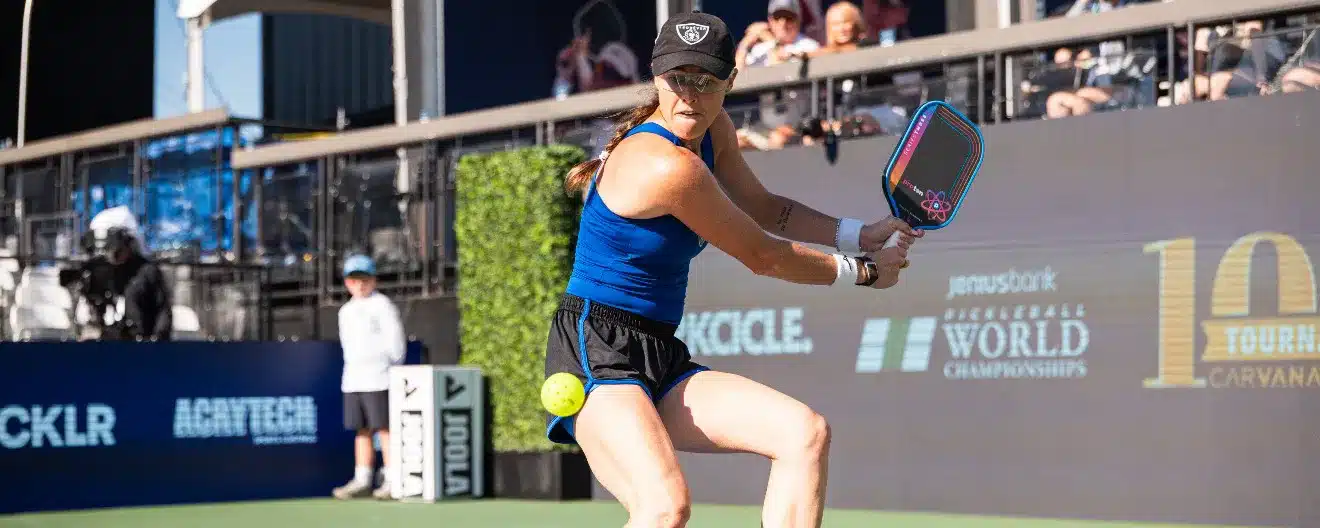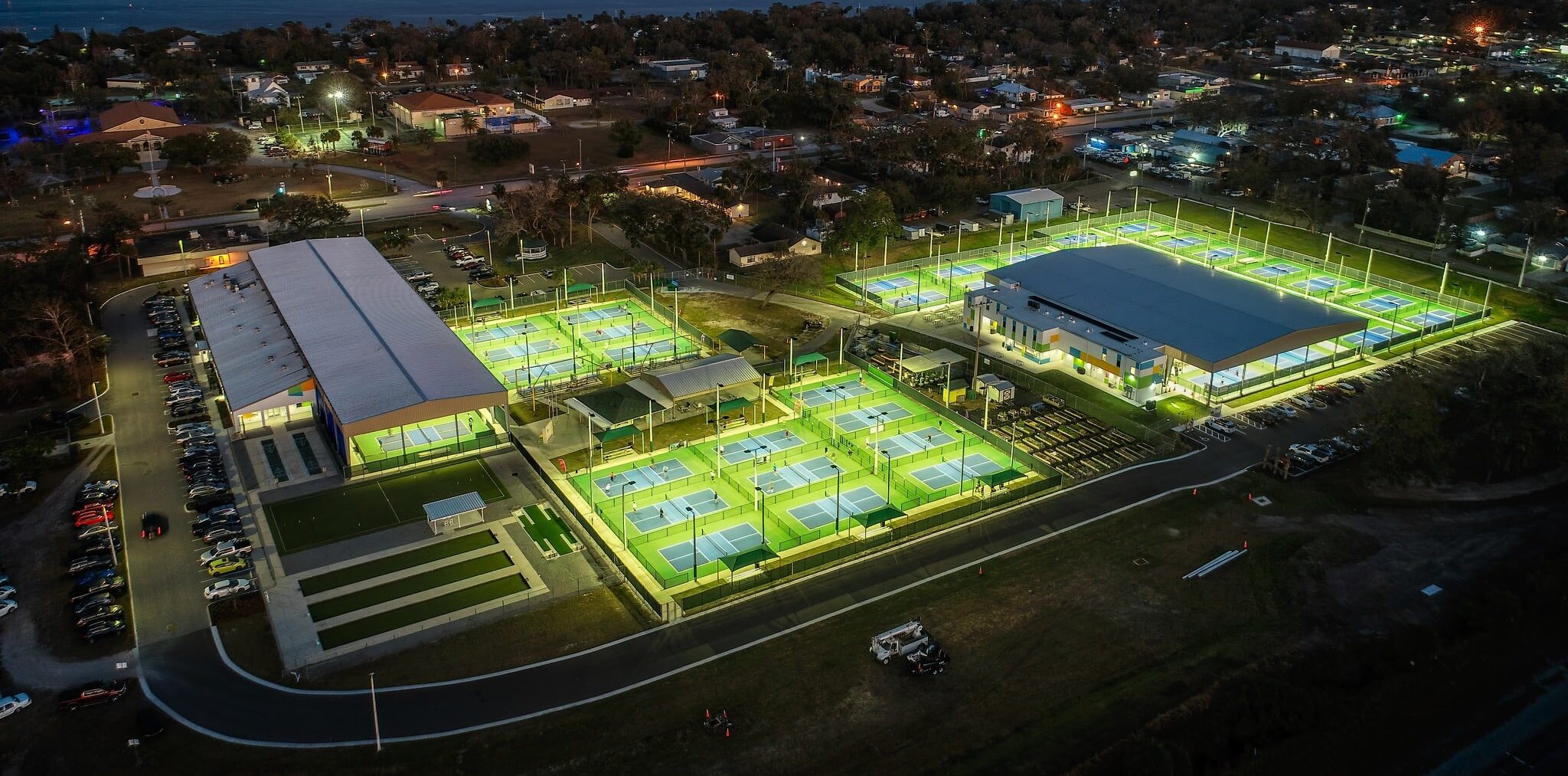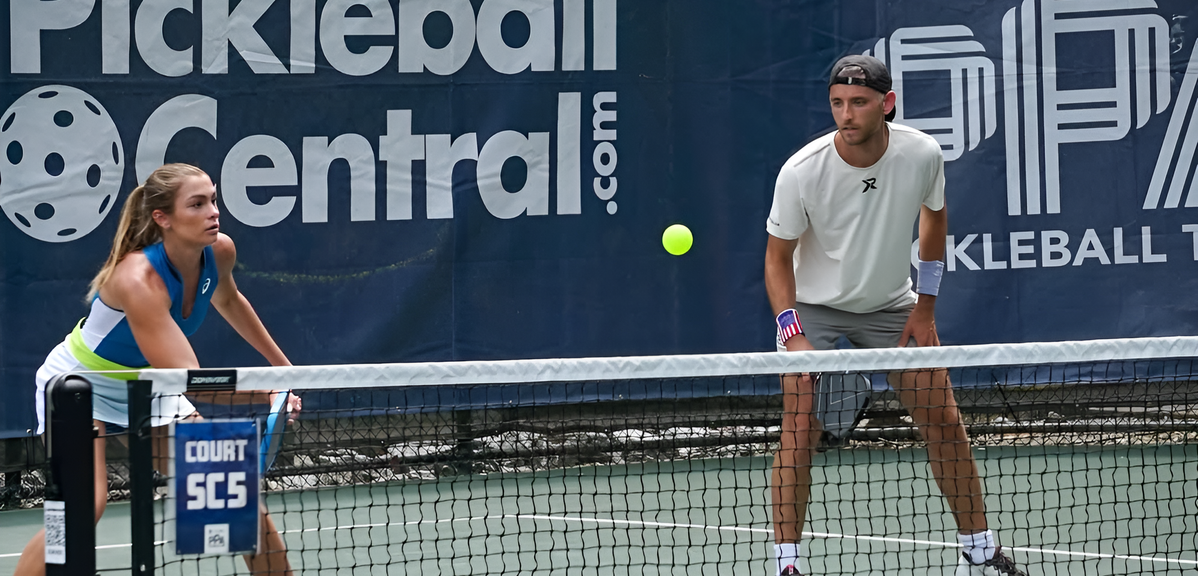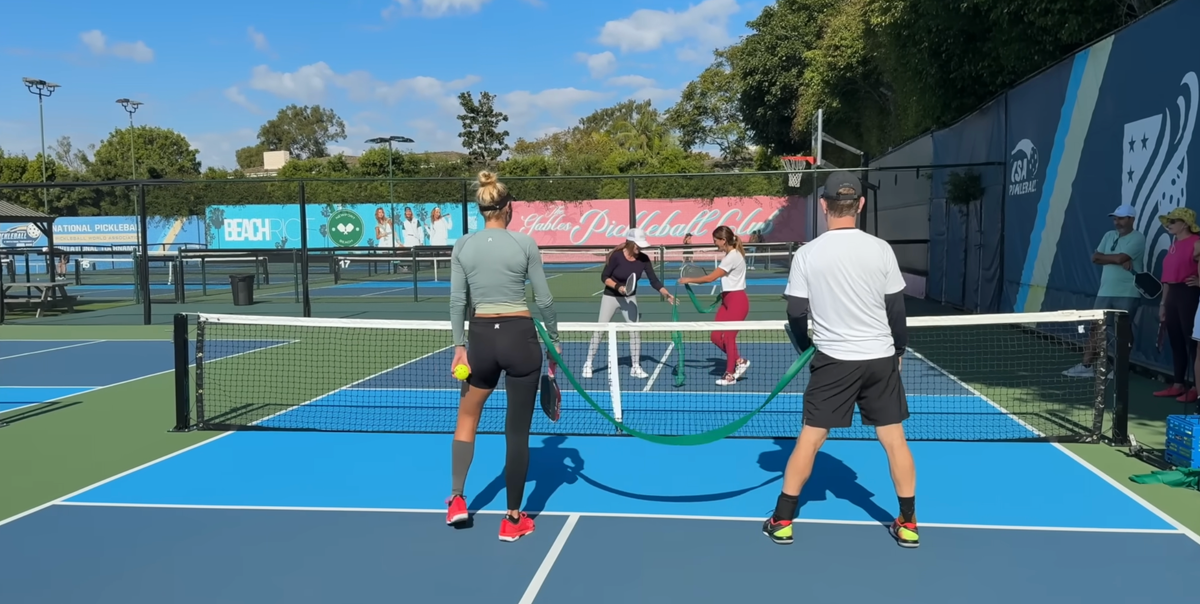She had every reason to give up on her dreams, but this one-time tennis grinder found unlikely salvation in pickleball.
Jessie Irvine steps outside her home near Los Angeles and gestures at the sun. “I moved here for this,” she says. She’s on her way to a private court where she teaches an exclusive list of clientele the ins and outs of pickleball.
The 32-year-old is no stranger to the grind of long days on a court, thanks to nearly ten years of competitive tennis. There was once a time when Irvine spent most of her waking hours eating, sleeping, breathing tennis in pursuit of her dream to make it on the WTA tour.
Irvine became fixated on tennis at age 10 and, thanks to her natural aptitude, soared to the Top 10 of nationally ranked juniors by age 13. Originally a native of Cary, N.C., Irvine moved to Florida to train at the Evert Tennis Academy and the Rick Macci Tennis Academy during her teenage years.
Ostensibly just another young girl hoping to become the next Steffi Graf, Irvine’s athletic career was beset by a dark undercurrent of chronic pain and mental turmoil. Her family’s history of arthritis manifested itself in young Jessie through a related complaint, but with a whole different set of repercussions. Born with insufficient cartilage to cushion her bones and joints, Irvine was plagued by aches and inflammation that were exacerbated by the physical demands of the sport she loved.
“Ironically, my otherwise healthy body was my downfall,” Irvine says with a laugh. “If I’d broken a bone or sprained something as a child and ended up in the hospital, they would have recognized my condition and told me to stay away from anything that could worsen my issues—particularly sports.”
Tennis Channel and the PPA Tour have created Pickleballtv, a standalone pickleball channel, along with separate websites and apps solely dedicated to the sport.
Already fully committed to tennis when the doctor’s evaluation finally came, Irvine made the decision to continue playing. She was warned that her condition was degenerative based on usage, so she began intensive physical therapy in an attempt to alleviate the damage. To combat the chronic pain throughout her body, Irvine began taking strong daily doses of motrin, ibuprofen and other painkillers as a junior.
“Any serious tennis player will tell you that, when you’re trying to make it, you don’t have the option to not play,” says Irvine. “You’ll play through pain, injuries, whatever it may be, as long as you physically can. Any time off is time wasted and creates a window for the competition to overtake you.”
Despite Irvine’s incredible fighting spirit, and after turning pro at 18, Irvine was eventually forced to admit that pain relievers and willpower were no longer enough. Nothing could mask the agonizing issues she was experiencing in her shoulder while serving. Without the necessary cartilage to handle the all-important task of cushioning her bones and surrounding tissue, the nerves in Irvine’s shoulder were sliding out of place at random, ending up in between her bones. The extreme pain caused by this can be equated to that experienced by someone with a pinched nerve.
The uncertainty caused by Irvine’s condition was just as debilitating. There was never any way of knowing when a nerve could slip, causing excruciating pain, inability to move the arm, and rehabilitation for 2-3 weeks.
“I could be up a set and a break in the semifinal, and if my shoulder decided to give out, I would have to retire from the tournament,” says Irvine. “When you can’t control how your body reacts to things, there’s an incredible sense of frustration and helplessness.”
At just 19, Irvine retired from tennis and accepted an offer to study at UCLA, where she earned a degree in sports psychology. But the day-to-day pain persisted, and she continued self-medicating with over-the-counter drugs.
Irvine moved to Florida to train at the Evert Tennis Academy and the Rick Macci Tennis Academy during her teenage years before ultimately turning to pickleball.
“I saw my study of sports psychology as a form of therapy and self-healing that I desperately needed. Quitting professional tennis meant that I lost the axis that I’d revolved around for so long and that wasn’t easy.”
Despite having finally submitted to her body’s limitations, Irvine still experienced further struggle. As a sophomore at UCLA, Irvine came down with what she thought was the flu. Pain tolerance had become nearly second-nature at that point, so she suffered through the discomfort until it became too much to bear.
Stumbling into the university’s urgent care center, Irvine was rushed to surgery and told that she was experiencing kidney failure. A hole had formed in her kidney, and infection had set in. The infection had already reached her bloodstream and was quickly spreading, causing Irvine’s body to begin shutting down.
“When I finally became lucid enough again to understand what was going on, one of the doctors told me that if I had stayed home one or two more days, I might never have woken up,” Irvine remembers. “That was a terrifying thing to hear.”
The pain medication Irvine had used continually since middle school had finally caught up with her. Although the warning labels on pill bottles are generally only seen as a nod to legal liability, overuse made these warnings very real for Jessie Irvine. It took more than two months for her to fully recover from the episode.
As she began to piece her life back together again, Irvine was forced to face the fact that she could no longer rely on traditional medication to handle her chronic pain. She was recommended CBD products as an unconventional, but more natural, answer to her situation. She began taking CBD tincture (concentrated liquid absorbed under the tongue) to reduce the inflammation around her joints and manage her pain. And it worked.
After the heartbreak I went through with tennis, I see pickleball as my second chance to compete at a high level. I never thought I’d get to experience that adrenaline rush again, so I couldn’t be more grateful to be where I am right now. Jessie Irvine
“With CBD, I don’t have to worry about any destructive effects like I did with the synthetic painkillers,” Irvine says. “It’s highly effective for me, especially because consistent use improves my results.”
Now, Irvine uses 20 mg of CBD tincture daily, along with occasional CBD drinks, gummies, and mints. She also applies CBD lotions and salves before she participates in something that requires her to be physically active.
“I’ve finally learned that prevention is better than a cure,” she says with a laugh.
Still missing the addictive competition that tennis had supplied her with, Irvine became curious about pickleball after hearing it described as easier on the body than tennis. With no overhead serves, more compact movements, a much smaller court and doubles as the preferred format, pickleball sounded like a possible fit. She began playing at the end of 2018 and quickly caught the (healthy) bug.
By April 2019, Irvine was competing at the U.S. Open where she took fourth place in doubles with her partner, Lindsey Newman. By August that same year, she had claimed her first title alongside partner Ben Johns at the Tournament of Champions. After that, she was all in on pickleball, and has committed herself to the sport full-time.
“After the heartbreak I went through with tennis, I see pickleball as my second chance to compete at a high level,” Irvine says on this sunny day. “I never thought I’d get to experience that adrenaline rush again, so I couldn’t be more grateful to be where I am right now.”
What's coming up on PBTV? Find out here.
Anuncie Aqui / Advertise Here
Sua marca para o mundo Pickleball! / Your brand for the Pickleball world!

 English
English  Spanish
Spanish  Portuguese
Portuguese  German
German  Italian
Italian  Japanese
Japanese  French
French  Polish
Polish  Russian
Russian  Netherlands
Netherlands  Hungarian
Hungarian  Turkish
Turkish  Videos
Videos 








 English (US) ·
English (US) ·  Portuguese (BR) ·
Portuguese (BR) ·